
DIETARY LIFESTYLES
Wondering if you should start a diet? Trick question, you already are! A diet is simply the kinds of food that a person, animal, or community habitually eats. Usually, when someone says "I am starting a diet" it really means "I am changing my eating habits". There is no one way to categorize all diets because what we eat is affected by an innumerable amount of things: genes, environment, culture, available resources etc. Check out our short list of diets to get a taste - ah ha ha - of all the ways you could be eating.
Designed to do exactly what the name implies, the DASH diet is promoted by the National Heart, Lung, and Blood Institute to stop or prevent high blood pressure. Around 45% of adult Americans have hypertension, putting them at risk for heart disease and stroke, which are leading causes of death in the United State. The DASH Eating Plan is high in vegetables, fruits, low-fat dairy products, whole grains, poultry, fish, beans, and nuts and is low in sweets, sugar-sweetened beverages, and red meats. It is low in saturated fats and rich in potassium, calcium, and magnesium, as well as dietary fiber and protein. Additionally, the sodium level is lower than the average diet. Below shows an example of day following the DASH diet.

The Ketogenic diet aims to put the body in a state of ketosis, in which fat is used as the primary energy source. Ketosis also occurs during pregnancy, infancy, fasting and starvation. The diet is very low in carbs, high in fats, and is known to promote weight loss. It may also lead to other benefits such as a reduction in seizures in children. There are a few variations of the Keto diet illustrated below.

The Mediterranean diet is based on the traditional eating patterns of Southern European countries bordering the Mediterranean Sea. The diet is characterized by fish, lots of non-tropical fruits and vegetables, and high amounts of unsaturated fats through olive oil and nuts. Also, low amounts of red meat, unrefined carbs and added sugars. The Mediterranean diet is recognized by the American Heart Association & American Diabetes Association as heart healthy due to its association with a lower risk to all cardiovascular diseases.

The switch to the Vegetarian diet could be motivated for many reasons such as environmental, religious, health, etc. Vegetarians do not eat meat, poultry, seafood, or animal flesh and may possibly exclude certain or all animal by-products such as dairy. There is mixed research on the exact benefits of this diet though it's generally met with positive reviews.

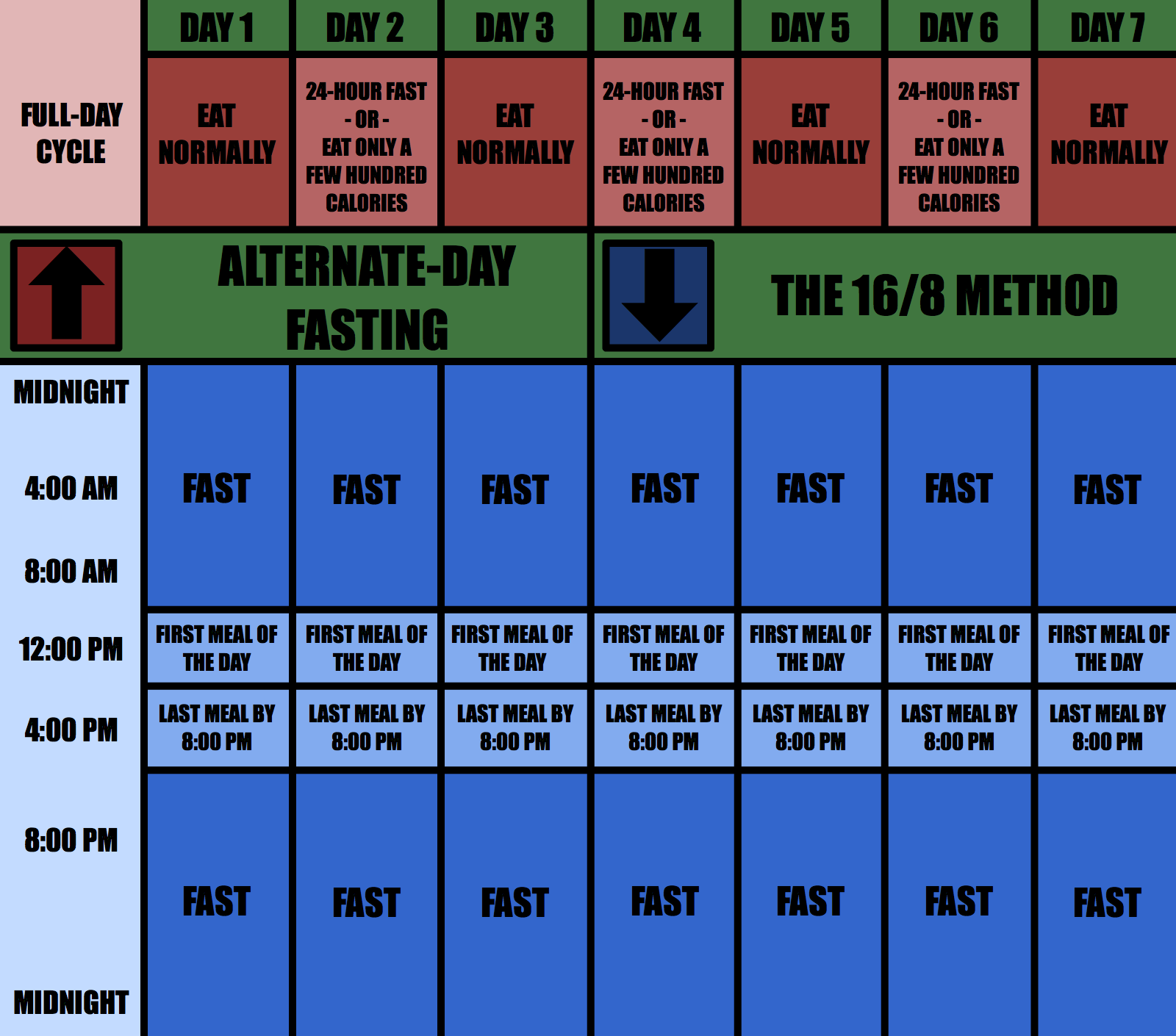
Food Groups
This section explores a few ways to categorize and evaluate our food. The Food Pyramid is a classic representation of this. It outline the 6 basic food groups along with the appropriate levels of daily servings. It's a good place to start; however, the model is somewhat outdated. The USDA now uses the MyPlate diagram for its increased practicality. This section also includes the nutrition charts referenced on the Basics page.
| Food Category | Breakdown |
|---|---|
Grains 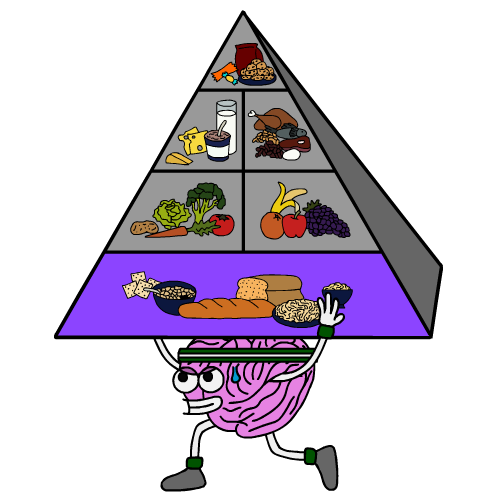 | Any food made from wheat, rice, oats, cornmeal, barley, or another cereal grain is a grain product. Grains are divided into 2 subgroups: Whole Grains and Refined Grains. Whole grains contain the entire grain kernel ― the bran, germ, and endosperm. Refined grains have been milled, a process that removes the bran and germ. This is done to give grains a finer texture and improve their shelf life, but it also removes dietary fiber, iron, and many B vitamins. Most refined grains are enriched. This means certain B vitamins (thiamin, riboflavin, niacin, folic acid) and iron are added back after processing. Fiber is not added back to enriched grains. The amount each person needs can vary between 3 and 8 ounce-equivalents each day -- at least half of the grains you eat should be whole grains. |
Vegetables 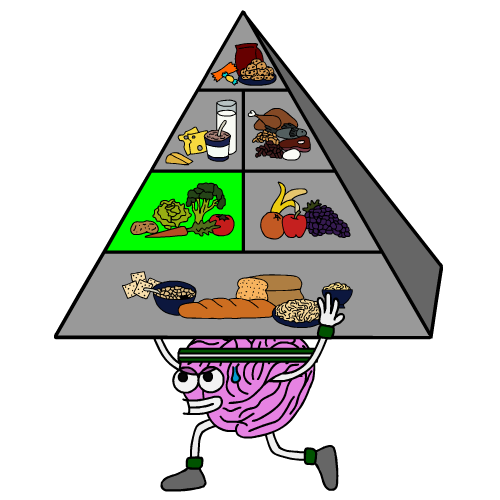 | Any vegetable or 100% vegetable juice counts as a member of the Vegetable Group. Vegetables may be raw or cooked; fresh, frozen, canned, or dried/dehydrated; and may be whole, cut-up, or mashed. Based on their nutrient content, vegetables are organized into 5 subgroups: dark-green vegetables, starchy vegetables, red and orange vegetables, beans and peas, and other vegetables. The amount each person needs can vary between 1 and 3 cups each day. |
Fruit  | Any fruit or 100% fruit juice counts as part of the Fruit Group. Fruits may be fresh, canned, frozen, or dried, and may be whole, cut-up, or pureed. The amount each person needs can vary between 1 and 2 cups each day. |
Dairy 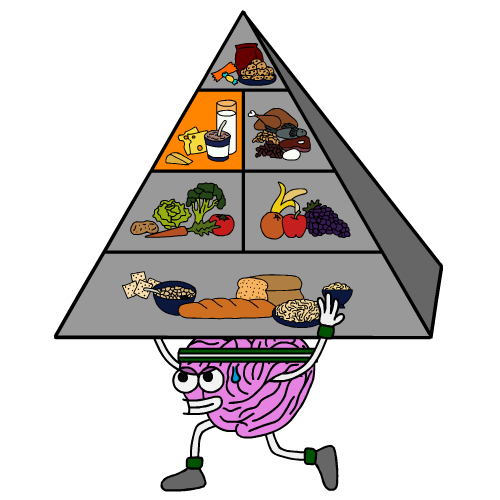 | All fluid milk products and many foods made from milk that retain their calcium content, such as yogurt and cheese, are part of the Dairy Group. Calcium-fortified soymilk (soy beverage) is also included. Foods made from milk that have little to no calcium, such as cream cheese, cream, and butter, are not part of the Dairy Group. The amount each person needs can vary between 2 and 3 cups each day. There are calcium choices for those who do not consume dairy products, though they are not part of the Dairy Group. The amount of calcium that can be absorbed from these foods varies. It includes canned fish, certain leafy greens and calcium-fortified juices. |
Protein 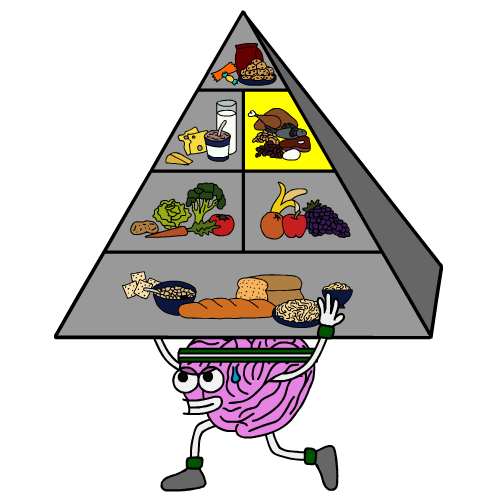 | All foods made from meat, poultry, seafood, beans and peas, eggs, processed soy products, nuts, and seeds are considered part of the Protein Foods Group. Beans and peas are also part of the Vegetable Group. The amount each person needs can vary between 2 and 6½ ounce-equivalents each day. Select a variety of protein foods to improve nutrient intake and health benefits, including at least 8 ounces of cooked seafood per week. |
Oils & Sweets 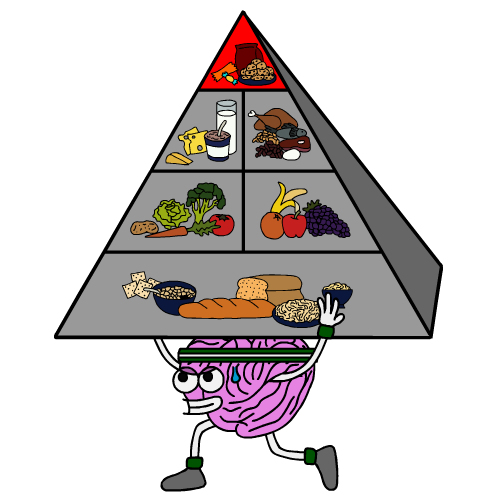 | Prior to the development of MyPlate, when the food groups were displayed in pyramid form, oils held the smallest space at the top. MyPlate has eliminated oil as a food group. Today the USDA recognizes just five food groups, recommending fats, oils and sweets be eaten only rarely.Check out our Oil Composition chart for a breakdown of dietary fats |
Useful Charts
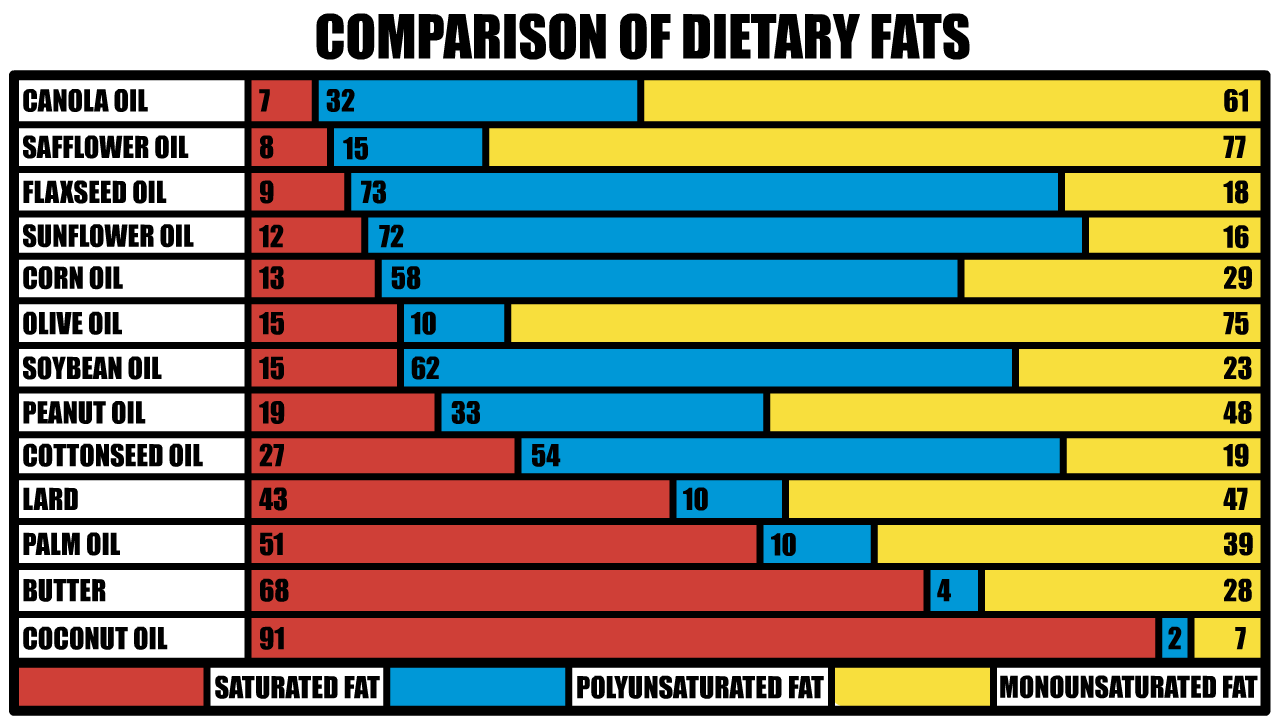
The PDCAAS is the most accepted and widely used measure of protein quality. Calculating PDCAAS is somewhat complicated but essentially it gives each protein food a score, 1.0 being the highest. This score means that after digestion the test protein provides the body with 100% of the essential amino acids.
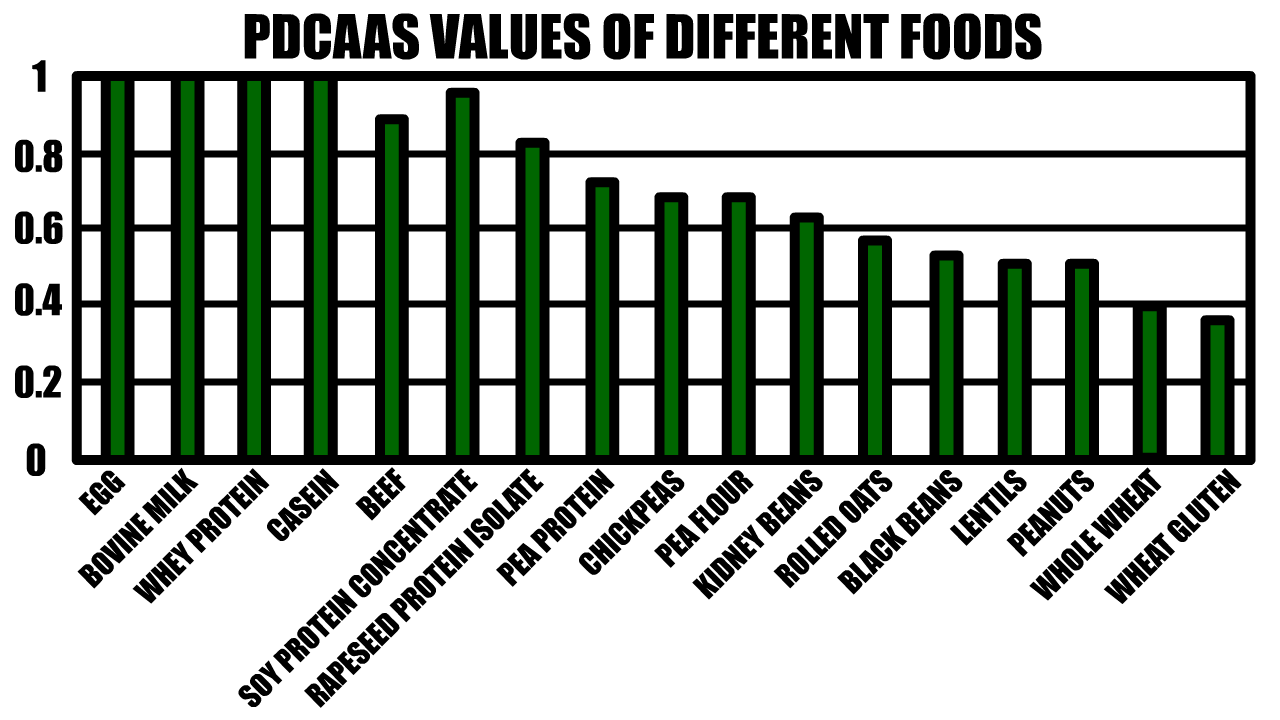
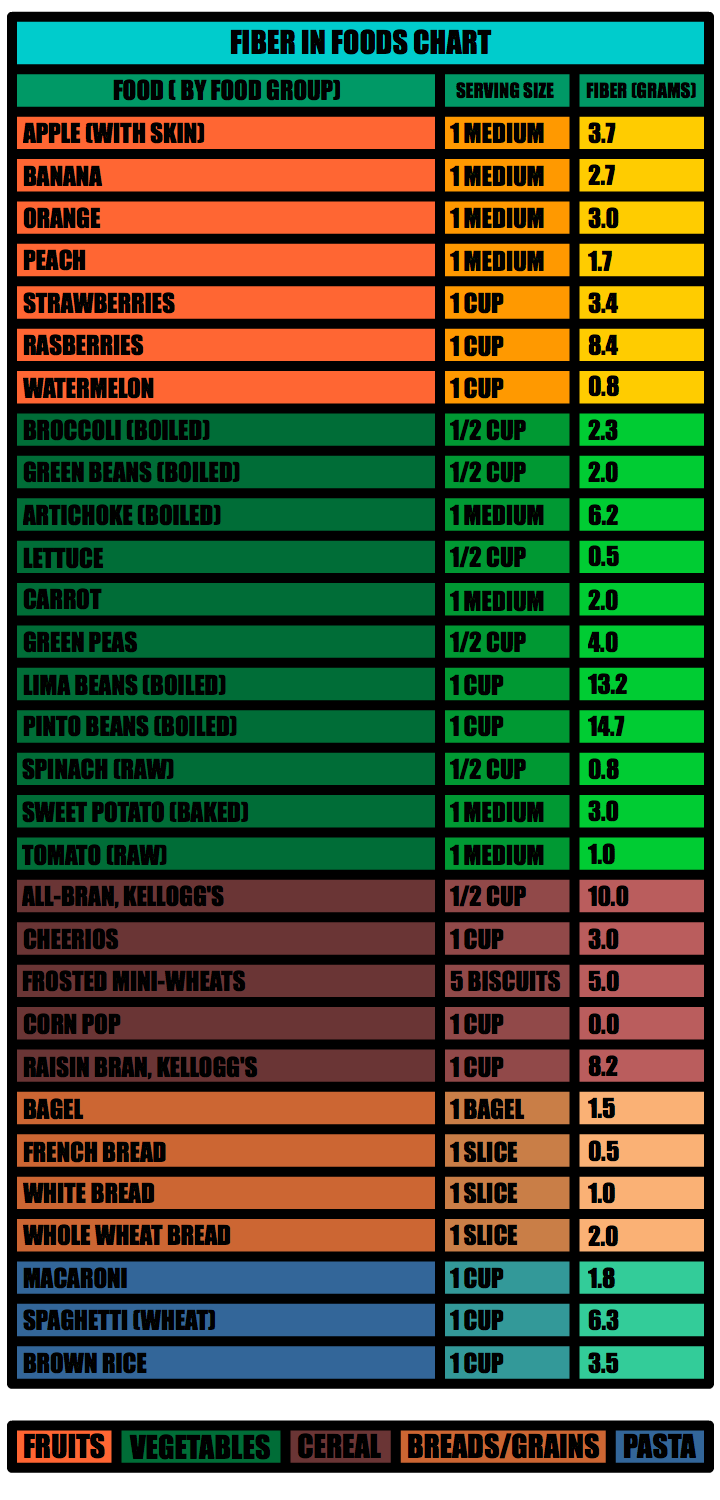
The glycemic index (GI) assigns a numeric score to a food based on how drastically it makes your blood sugar rise. Foods are ranked on a scale of 0 to 100, with pure glucose (sugar) given a value of 100. The lower a food's glycemic index, the slower blood sugar rises after eating that food. To understand a food's complete effect on blood sugar, you need to know both how quickly it makes glucose enter the bloodstream and how much glucose per serving it can deliver. A separate measure called the glycemic load does both — which gives you a more accurate picture of a food's real-life impact on your blood sugar. Watermelon, for example, has a high glycemic index (80). But a serving of watermelon has so little carbohydrate that its glycemic load is only 5.

Copyright © 2020-2022 GLY LLC
All rights reserved.